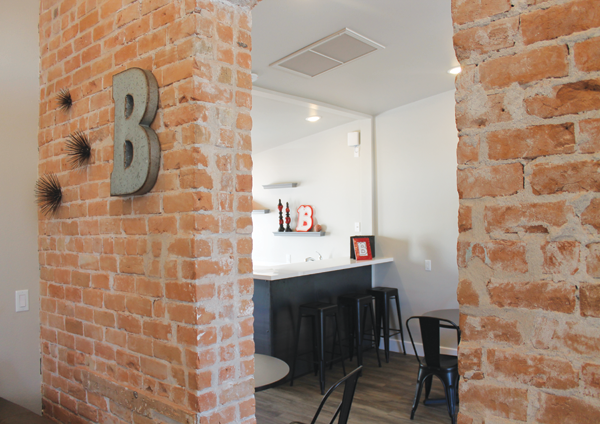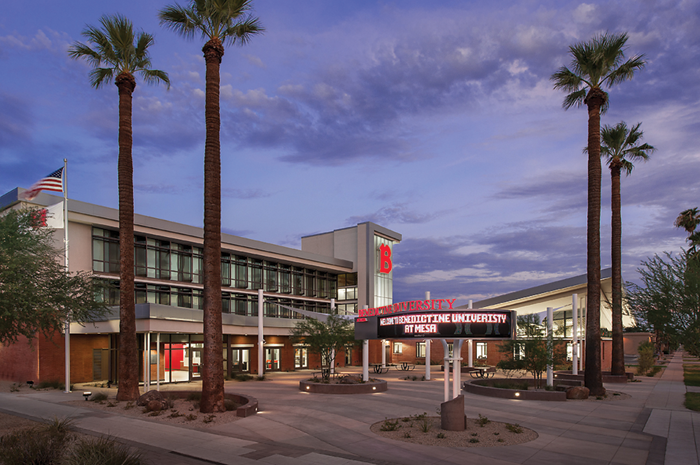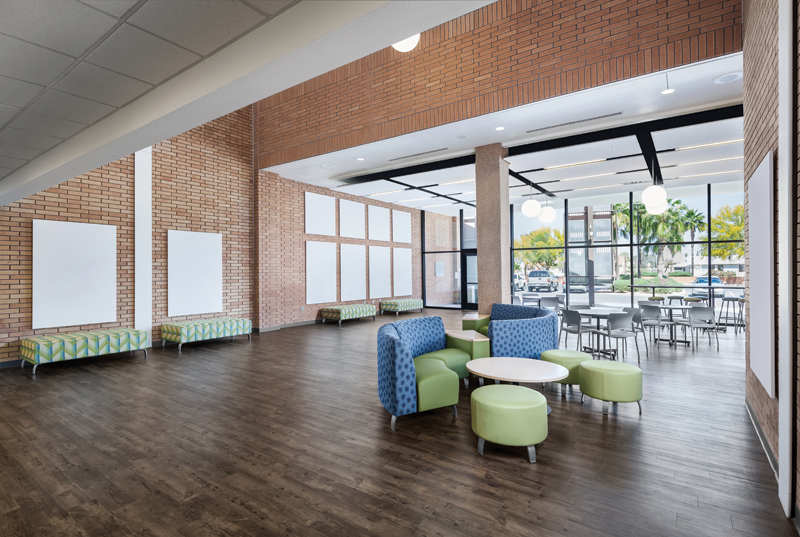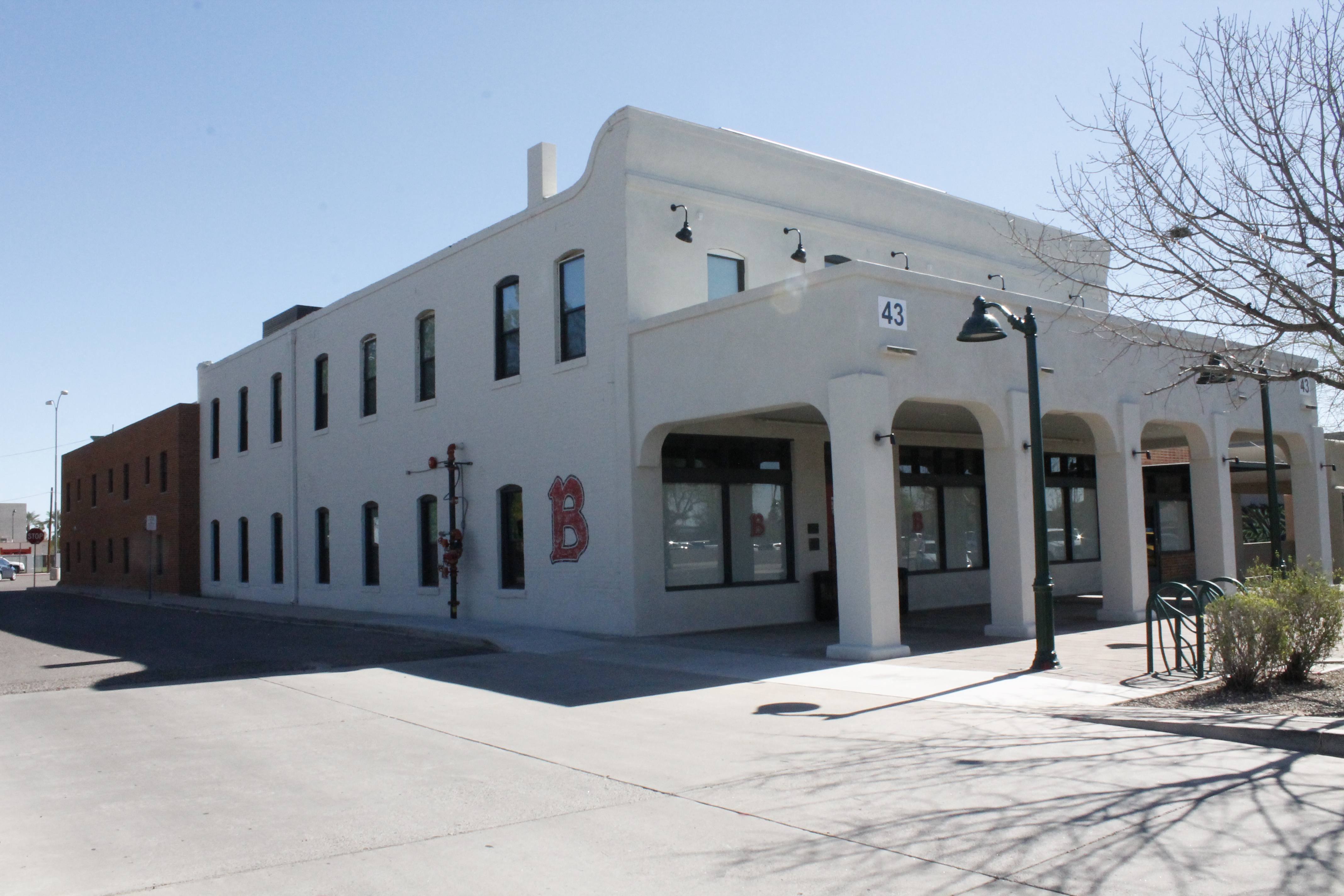
By Amanda Harvey
Architect Carl Elefante is known for a great quote: “The greenest building is the one already standing.” Elefante noted that old buildings and communities are important to us because they help us to relearn how to design cities like they were before cars, and buildings like they were before there was air conditioning and cheap fuel. And, in fact, recent findings have found that building reuse almost always yields fewer environmental impacts than new construction. This is just one reason that adaptive reuse, the process of reusing an old site or building for a purpose other than which it was originally built, can be an important part of a community’s sustainable planning and design.
For the city of Mesa, the light rail expansion into the downtown area in 2015 brought the opportunity for economic growth and some exciting adaptive reuse projects. Here is the story of how these existing buildings were recently transformed to accommodate higher education venues.
 FROM SOUTHSIDE HOSPITAL TO BENEDICTINE UNIVERSITY
FROM SOUTHSIDE HOSPITAL TO BENEDICTINE UNIVERSITY
Originally constructed in the 1920s as Southside Hospital, and expanded several times through the 1950s, 225 E. Main Street was once an important element of an active downtown Mesa. With the opening of Desert Samaritan (Banner Desert) in the 1970s, Southside Hospital closed. The property was home to many community service tenants that eventually closed their doors in 2001. The city of Mesa, recognizing the value of this historic landmark to the downtown fabric, purchased the building with the goal of encouraging redevelopment, and Mesa’s Office of Economic Development began to market the site to colleges and universities as part of its Higher Education Initiative. Benedictine University, a private nonprofit Liberal Arts College from Illinois, was intrigued by the site’s ideal location in the heart of downtown and the proximity to the adjacent light rail. Through a public-private partnership, Benedictine University and the city invested in the project for the renovation. Classes opened in fall 2013 and enrollment has exceeded expectations ever since.
Kelley Keffer, project manager for the Office of Economic Development in the city of Mesa, pointed out the old hospital sat vacant on Main Street for 10 to 12 years. “When you talk about an appealing, attractive downtown, having vacancies doesn’t make sense,” she explained. “It’s critically important to fill unused spaces to revitalize the community as a whole. It’s difficult to sell any type of new development when you have vacant spaces,” she continued.
“When you look at Main Street in downtown Mesa, we have a conglomerate of small business owners. It’s the backbone of downtown Mesa. Being involved in a revitalization project that puts more focus on improving the aesthetics and appeal of Main Street and giving these small businesses an opportunity to shine – it’s a project that gives me fulfillment,” said Keffer.

FROM MESA COURTHOUSE TO THE MESA CENTER FOR HIGHER EDUCATION
Continuing Mesa’s higher education initiative, it was natural to consider the old Mesa City Courthouse to attract additional institutions, and the idea for the Mesa Center for Higher Education was born. The building underwent state-of-the-
art renovations in 2013 to include 13 classrooms, six fully- equipped science and engineering labs, offices, conference rooms, and student study and gathering spaces. Current occupants include Wilkes University (specializing in liberal arts, sciences and professional programs) and LaunchPoint, a Mesa technology accelerator. Benedictine University, already running tight on space, recently moved some of their classrooms into the space as well. The introduction of the universities into the shared space has brought more students to the downtown Mesa area, which in turn has seen new business growth.
Charlie Gregory, campus executive officer for Benedictine University, appreciates the historic charm of the old-made- new spaces. “We enjoyed moving into these buildings where they have history,” he said. “It adds to the excitement of the community. We’re not replacing it, we’re preserving it.”
The Mesa campus’ first graduating class is set to walk across the stage this year, and Gregory couldn’t be more proud. “You can see it in the students when they walk through here. You can see how the growth has impacted them in a positive way. A lot of these kids now are talking about staying here in the community and making a difference,” he said.
ALHAMBRA HOTEL (TO TRANSITIONAL LIVING) TO ALHAMBRA RESIDENCE HALL
With the lack of housing opportunities stunting its growth, Benedictine University found an ideal solution. The 122-year-old Alhambra Hotel (which had most recently been used as a halfway house) was remarkably restored and converted into student housing for Benedictine by local building company Venue Projects. “It was quite the undertaking,” said Lorenzo Perez, co- founder and principal of Venue Projects. The entire venture was completed from the initial inquiry to the final build in one year, and the ribbon cutting took place February 8, 2017.
The Alhambra houses 56 beds in two wings. The west wing is original from the 1890s, dormitory style with common restrooms and shared spaces. The L-shaped east wing was added in the 1950s and includes an outdoor courtyard and rooms with in-suite bathrooms. The two eras of architecture provided the opportunity to offer different room types from various price points, said Perez.
Venue Projects also upgraded the building’s amenities to be more eco-friendly, including installing low-flow showerheads and toilets, LED lighting, new energy-efficient air conditioners, dual-pane windows, artificial turf and xeriscaping in the courtyard for functional outdoor space, and more. They kept much of the original architectural flair, including the original 1950s windows, which were unique.
“Transforming these forgotten areas into spaces that add value to the community is very fulfilling,” said Perez. “We like preserving the stories and the heritage in the Valley and that seems to be more and more important to the younger generation,” added Jon Kitchell, co-owner of Venue Projects. “It’s so rewarding to restore a building that has that kind of history and meaning to a whole lot of people. [The Alhambra Hotel] is very well known in this part of the Valley and everyone seems to appreciate the fact that it has been restored and has a new life,” he continued.
Not only are the new student occupants happy to have a uniquely renovated space, downtown business owners are also pleased with the addition. Jeff McVay, Mesa’s manager of downtown transformation, was involved in the Alhambra project from day one, acting as a liaison between Venue Projects and the city. “How happy [business owners] were to see this new redevelopment is very telling about what it means to the revitalization of downtown,” said McVay.
Keffer says the city of Mesa has no plans to slow down yet, and is looking forward to more growth and development. “We’re concentrating on creating that sustainable mix of business, residential and entertainment uses that create an energetic and active downtown atmosphere,” she said.
For more, visit mesaaz.gov/about-us/city-projects/downtown- transformation. For a personal look at the updated historic space, attend the Green Living March issue launch party at Benedictine University on Thursday, March 2.







